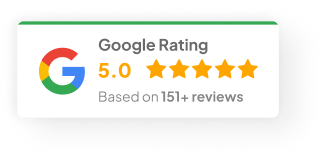16 Sep 25
Psychology of Web Design: How Design Choices Influence Buyer Decisions
People don’t give websites much time. By the time a page loads, the decision’s basically made. Google research says it takes 0.05 seconds for users to form an opinion. That’s faster than a blink. And here’s the kicker—it’s not the words they’re reacting to. It’s the look. Colors. Fonts. Layout. All those little design choices speak louder than the copy.
This is what design psychology is about. Understanding how those tiny decisions affect how people feel and what they do next.
1) First Impressions Count
Trust is the first hurdle. No trust, no sale. A study found that 75% of people judge a company’s credibility based on the website design. That’s not a small number—it’s most of your visitors.
Think about it:
- A clean layout tells people you’re organized.
- Consistent branding suggests reliability.
- Outdated, cluttered pages… well, those just send visitors running.
Websites act like digital storefronts. If the window display looks sloppy, people walk past without even stepping in.
2) How Colors Push Decisions
Colors do more heavy lifting than most realize. They carry emotions. They set moods.
- Blue feels safe and secure, which is why banks and tech companies lean on it.
- Red screams urgency and excitement—perfect for sales banners or a bold “Buy Now” button.
- Green? Health, calm, nature. Works beautifully for eco-friendly brands or wellness sites.
The American Marketing Association found that color drives up to 90% of snap product judgments. That’s nearly all of them. Even something as small as switching a call-to-action from grey to red can shift behavior.
3) Navigation Makes or Breaks It
Good looks won’t save a site if people can’t figure out where to click. The old “three-click rule” isn’t perfect, but the spirit is right—users expect to get where they need fast.
Menus need to be clear. Buttons obvious. The whole flow frictionless. Mess this up and the consequences are brutal: 88% of users won’t return after a bad experience.
A smooth site feels like a smooth conversation. No hiccups, no guessing. Just forward momentum.
4) Typography Matters More Than It Seems
Fonts are often overlooked, but they’re powerful. Serif fonts (like Times New Roman) bring a sense of tradition and authority. Sans-serif fonts (like Helvetica or Arial) feel modern, casual, approachable.
But the real key is readability. Large enough text. Proper spacing. Clear hierarchy. Studies prove people spend longer on sites they can actually read without straining. If reading feels like work, they bail.
5) Visual Hierarchy: Guiding the Eye
Visitors don’t read everything on a page—they scan. Usually in an F-shape or Z-shape pattern. Designers who know this can place the right information—headline, offer, call-to-action—exactly where the eye naturally falls.
- White space keeps things breathable.
- Bold fonts highlight what’s critical.
- Contrast pulls attention to the right spot.
When done right, visitors see exactly what they need in the right order. That’s not luck. That’s design.
6) Social Proof and Subtle Triggers
Design also sneaks in persuasion. A few simple elements can make a site feel more trustworthy:
- Testimonials or case studies
- Trust badges (like SSL or certifications)
- Scarcity cues, e.g., “Only 2 left”
Layer in visuals that tell a story—photos of real customers, short videos—and suddenly decisions feel easier. People buy emotionally first, then justify with logic. That’s how most purchases happen, even online.
7) Mobile and Accessibility
Over 60% of web traffic comes from mobile devices now (Statista, 2024). That means if a site doesn’t adapt to smaller screens, it’s bleeding users.
Responsive layouts, quick loading, tap-friendly buttons—that’s just table stakes. Accessibility matters too. Alt text for images, high contrast, keyboard navigation. These aren’t add-ons; they expand reach and show inclusivity, which strengthens brand trust.
Why Bring in a Web Design Agency
Sure, there are drag-and-drop builders everywhere. But stitching together all these moving parts—design psychology, user flow, SEO, accessibility—it takes skill. A web design agency handles the tough stuff so business owners don’t have to. The right agency makes sure the site doesn’t just look nice but actually drives conversions.
Picking the Right Partner
Not all agencies are equal. A few things to look for:
- A track record of years, not months
- Results measured in leads and sales, not just pretty visuals
- Knowledge of your industry and customer base
- Ongoing support, because websites aren’t “set it and forget it”
- Testimonials that show reliability
These things separate the pros from the template pushers.
Chromatix: Specialists in Conversion Design
Chromatix focuses on building sites that perform. Not just glossy brochures online, but tools that pull in leads, sales, and trust. The team leans on years of experience, design psychology, and UX research to craft strategies tailored to each business.
Everything is custom—no cookie-cutter templates. And that’s why businesses who work with Chromatix see websites that actually pay for themselves.
Conclusion
Design isn’t decoration. It’s persuasion. Fonts, colors, layouts, the way a button is placed—all of it shapes how people see a brand and whether they take action.
Get those choices right, and the website works harder than any salesperson. Leave them to chance, and conversions slip away.


